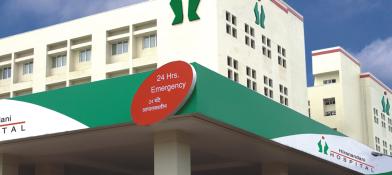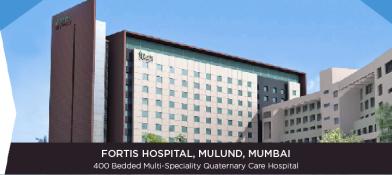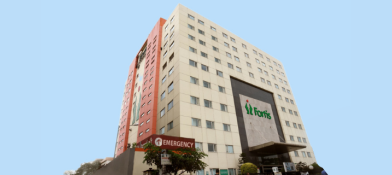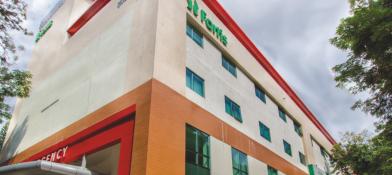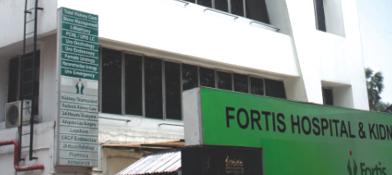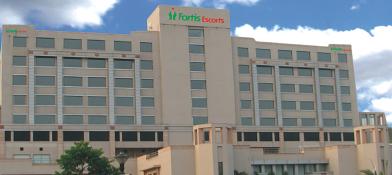Abdominal hysterectomy
An abdominal hysterectomy is a surgical intervention characterized by the extraction of the uterus via an incision performed in the abdominal region. It is one of the most common surgical interventions performed in gynecology and is often recommended for various conditions affecting women's reproductive health. This article will explore abdominal hysterectomy in detail, including its indications, procedure, recovery, and potential benefits and risks.
Understanding Abdominal Hysterectomy
The surgical procedure that involves extraction of the uterus through an abdominal incision is called an Abdominal hysterectomy. The procedure might also include extracting the cervix, ovaries, and fallopian tubes.
In this surgical process, the surgeon makes an incision either vertically or horizontally in the lower abdomen to reach and remove the uterus. The procedure may also involve the removal of other structures, such as the cervix, fallopian tubes, and ovaries, depending on the individual's specific condition and medical needs.
Indications
Abdominal hysterectomy may be recommended for various gynecological conditions, including:
- Uterine Fibroids: Large or multiple fibroids in the uterus can cause symptoms such as heavy menstrual bleeding, pelvic pain, and pressure. An abdominal hysterectomy may be considered when conservative treatments fail to alleviate symptoms.
- Endometriosis: Endometriosis, characterized by the abnormal growth of uterine lining tissue outside the uterus, often leads to persistent pelvic discomfort and challenges with fertility. Abdominal hysterectomy may be an option for women with extensive endometriosis.
- Uterine Prolapse: When the muscles and ligaments supporting the uterus weaken, the uterus can descend into the vaginal canal, causing discomfort, urinary incontinence, and other symptoms. Abdominal hysterectomy can be performed to address uterine prolapse.
- Gynecologic Cancers: Abdominal hysterectomy may be part of the treatment plan for certain gynecologic cancers, including uterine cancer, ovarian cancer, and cervical cancer.
Procedure
Anesthesia and Incision: For an abdominal hysterectomy, the patient receives general anesthesia to ensure comfort and unconsciousness. The incision, either horizontal or vertical, is made in the lower abdomen, extending from the navel to the pubic bone.
Uterus Removal: The surgeon carefully separates the uterus from surrounding tissues and blood vessels. If necessary, the cervix, fallopian tubes, and ovaries may also be removed. The surgeon then closes the incision, typically using absorbable sutures or staples.
Duration and Hospital Stay: The duration of the surgical procedure varies depending on factors such as the case's complexity. Following surgery, the patient is usually required to stay in the hospital for a couple of days for monitoring and post-operative care.
Surgical Approaches to Abdominal hysterectomy
- Open vs. Minimally Invasive Approaches: Abdominal hysterectomy can be performed through open surgery or by using minimally invasive techniques. Open surgery involves a larger incision and is commonly used for complex cases or when the uterus is significantly enlarged. Utilizing minimally invasive techniques like laparoscopic or robotic-assisted hysterectomy involves smaller incisions and specialized instruments for the procedure. These methods typically lead to shorter hospital stays, reduced post-operative discomfort, and faster recuperation compared to open surgery.
- Total vs. Partial Hysterectomy: Sometimes, only part of the uterus requires removal, known as a partial hysterectomy. Conversely, a total hysterectomy entails removing the entire uterus, including the cervix. The decision between total and partial hysterectomy considers factors like the underlying condition, patient preferences, and surgeon's advice.
Potential Benefits of Abdominal Hysterectomy
Abdominal hysterectomy can offer substantial benefits to women who have not found relief from their gynecological condition through conservative treatments.
For example, in cases where a woman has been experiencing persistent pelvic pain, heavy menstrual bleeding, and pressure due to uterine fibroids, and conservative measures such as medication or hormonal therapies have been unsuccessful in alleviating these symptoms, an abdominal hysterectomy may be recommended. By removing the uterus, the procedure can provide effective relief and improve the woman's quality of life. Additionally, if a woman has been attempting to conceive but has been unsuccessful due to severe endometriosis that hasn't responded to other treatments, an abdominal hysterectomy may be considered to address fertility concerns and potentially increase the chances of achieving a successful pregnancy.
Post-Operative Care
After an abdominal hysterectomy, patients are typically advised to take certain precautions during the recovery period. This may include avoiding heavy lifting, strenuous activities, and sexual intercourse for a specified period. Pain medication, antibiotics, and stool softeners may be prescribed to manage pain, prevent infection, and promote bowel regularity. Scheduled follow-up appointments monitor healing progress and address any emerging concerns or complications.
Recovery and Potential Risks
Recovery from an abdominal hysterectomy typically takes several weeks. Patients may experience pain, fatigue, and mild discomfort during the initial recovery period. Following the surgeon's instructions regarding physical activity, lifting restrictions, and wound care are essential to promote proper healing. While abdominal hysterectomy is generally considered safe, it carries potential risks and complications, including:
- Infection risk: Post-surgery, infections at incision or pelvic areas may occur, typically mitigated with prescribed antibiotics.
- Blood clot risk: During recovery, immobility raises the chance of leg or lung blood clots. Preventive measures include early mobilization, leg exercises, and medication.
- Surrounding structure damage: The procedure carries a slight risk of injuring nearby organs like the bladder, intestines, or blood vessels. Surgeons take precautions to minimize such occurrences.
- Adverse Reactions to Anesthesia: While uncommon, reactions to anesthesia can range from mild to severe. An anesthesiologist closely monitors the patient's condition throughout the surgery.
Conclusion
Abdominal hysterectomy is a surgical solution for various gynecological issues involving uterine removal through an abdominal incision. It may entail removing other reproductive structures as needed. Despite potential risks, it's generally safe and beneficial for conditions like fibroids, endometriosis, uterine prolapse, and gynecologic cancers. Patients should discuss the procedure extensively with their healthcare provider to understand its benefits, risks, and recovery.







